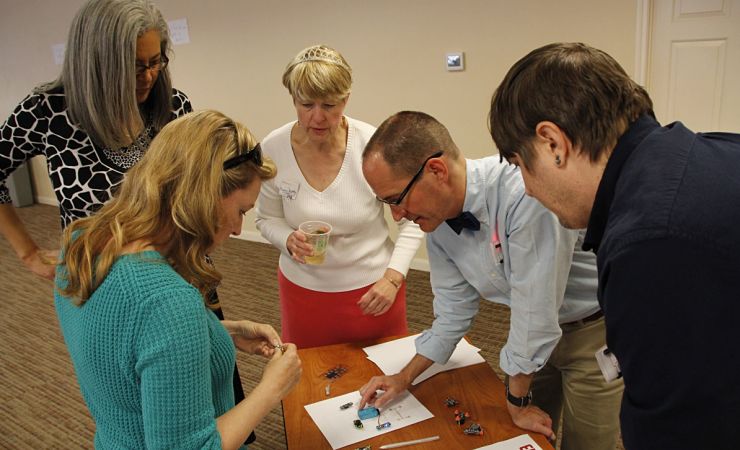If You Hope To Make Great Things Happen, You Have to Learn How to ‘Make Things’ First

Today we take a look at the “makerspace challenge,” a way of engaging with students in entrepreneurship. Sean R. McMahon, one of the authors of “Independence In The Making: Using Makerspace Experiences To Build Foundational Entrepreneurial Competencies,” discusses what motivated starting the process at North Carolina’s Elon University and why there’s motivation to evangelize for the idea. Faculty of Department of Management and Entrepreneurship at Elon —Elena Dowin Kennedy and McMahon, and Dan Reis, a senior instructional technologist at Elon — penned the paper, which appears the journal Entrepreneurship Education and Pedagogy. McMahon’s discussion appears just after the paper’s abstract.
This paper describes the makerspace challenge, an experiential assignment that builds foundational entrepreneurial competencies through the creation of artifacts within campus makerspaces. This assignment strengthens student ability to navigate ambiguity, learn new technologies, effectively utilize resources, and bring creative ideas to reality in a low stakes supportive environment. Students choose 3 out of 4 pre-identified projects to complete outside of class over a three week period, presenting a tangible artifact in-class each week. Grounded in constructionist pedagogy, this assignment is particularly appropriate for introductory entrepreneurship courses, but can easily be scaffolded to be applicable throughout the entrepreneurship curriculum.
What motivated you to pursue this research?
My co-authors and I thoroughly enjoyed developing the Makerspace Challenge for our Entrepreneurship students at Elon University. I think everyone has experienced a time when they envisioned something; a picture, a thing, a gadget, or a tool, but then reality sets in when you start to actually try and make it. We saw this over and over in our classes. Students would be enthused about innovations being developed in the world and the potential impact of creative, productive ideas, but when it came time to roll up their sleeves they didn’t know what to do. That’s where the Makerspace Challenge comes in. The idea is to help students get their foot in the door – to get them from zero to one in terms of basic familiarity with hands-on making.

In what ways is your research innovative, and how do you think it will impact the field?
At Elon and a number of other schools with Makerspaces, it is the engineering students who are more likely to self-identify as makers. That’s fantastic, but it should be a place entrepreneurship majors and minors also become familiar with. Moreover, we think Makerspaces are a place of natural synergy for entrepreneurship students and makers from other departments to learn more about each other’s disciplines. That’s a win-win situation. It is our hope that other faculty members seeking to build this synergy will utilize our Makerspace Challenge as a road map to make their own maker space collaborations.
What did not make it into your published manuscript that you would like to share with us?
Our paper was about the Makerspace Challenge, a set of experiences that happens in a single course, but we have actually integrated Elon’s Makerspace into three entrepreneurship courses. By the time a student has earned a major or minor in entrepreneurship, they will have done more than 3D print, used the vinyl cutter, and sewn. They will also get safety certified in laser engraving, saws, and other tools in our Makerspace. Not only does this give them a nice set of skills to indicate on their resume, it changes the way they interact with their entrepreneurship classes over time. Ideas involving the built environment that might have previously been ‘off the table’ in terms of their abilities are, instead, increasingly integrated with their idea generation and opportunity recognition as they make their way through the entrepreneurship program.

































































































